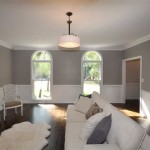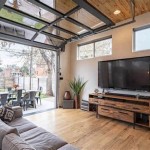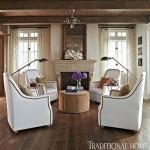Small TV Stands: Maximizing Space and Style in Your Living Room
In contemporary living spaces, optimizing space is a paramount concern. With the increasing popularity of smaller homes, apartments, and condominiums, furnishing choices must prioritize functionality and efficient use of available square footage. One crucial element in many living rooms is the television, and the choice of TV stand can significantly impact the overall aesthetics and usability of the room. Small TV stands provide a solution for integrating entertainment systems into compact environments without overwhelming the space. This article will explore the diverse range of small TV stands available, their key features, and considerations for selecting the ideal model for a given living room.
The term "small TV stand" generally refers to units designed to accommodate smaller televisions, typically those under 50 inches, and occupying a minimal footprint. These stands are available in a variety of materials, styles, and configurations, each offering unique benefits. Understanding the different types of small TV stands, their construction, and their compatibility with different living room setups is essential for making an informed purchase.
Key Point 1: Types of Small TV Stands
Several distinct types of small TV stands cater to varying needs and aesthetic preferences. Distinguishing these types is important for selecting the most suitable option.
Corner TV Stands: These stands are designed to fit snugly into a corner, effectively utilizing otherwise underutilized space. Their triangular or curved shape allows them to sit flush against the walls, maximizing floor space in the central area of the room. Corner TV stands are particularly beneficial for smaller living rooms where every inch counts. They often feature shelves and cabinets for storing media components, DVDs, and other accessories, maintaining a clutter-free environment.
Floating TV Stands: As the name suggests, floating TV stands are mounted directly to the wall, creating a suspended appearance. This design not only saves floor space but also offers a minimalist and modern aesthetic. Floating stands are available in various sizes and configurations, often incorporating shelving and drawers for storage. Their elevated position can also make cable management easier, as wires can be concealed behind the stand.
Media Consoles: Even in smaller sizes, media consoles provide a comprehensive solution for housing entertainment systems. These stands generally feature a combination of open shelving, drawers, and enclosed cabinets, offering ample storage for media components, gaming consoles, and other accessories. Media consoles are often wider than other types of small TV stands, providing a stable base for larger televisions while still maintaining a compact overall footprint. Their enclosed storage options help keep the living room organized and visually appealing.
TV Stands with Mounts: Some small TV stands incorporate a built-in mounting system. This design allows the television to be securely attached to the stand, often providing height adjustability and swivel capabilities. TV stands with mounts offer a versatile solution for optimizing viewing angles and minimizing the need for wall mounting. They are particularly useful in situations where wall mounting is not feasible or desirable.
Simple Shelving Units: For those seeking a more minimalist approach, simple shelving units can serve as effective small TV stands. These units typically consist of a few shelves, providing ample space for the television and a limited number of media components. Simple shelving units are often constructed from lightweight materials such as wood or metal, making them easy to move and reposition. Their open design promotes airflow, preventing overheating of electronic devices.
Key Point 2: Material and Construction Considerations
The material and construction of a small TV stand significantly impact its durability, aesthetics, and overall suitability for a given living room. Common materials used in the construction of small TV stands include wood, metal, glass, and various composite materials.
Wood: Wood remains a popular choice for TV stands due to its natural beauty, durability, and versatility. Solid wood stands offer exceptional strength and longevity, while engineered wood options, such as plywood and MDF (medium-density fiberboard), provide a more affordable alternative. Wood TV stands are available in a wide range of finishes, from natural wood tones to painted or stained options, allowing them to blend seamlessly with various interior design styles. The type of wood and its finish will influence the stand's resistance to scratches, dents, and moisture.
Metal: Metal TV stands offer a sleek and modern aesthetic. Metal construction is generally strong and durable, providing a stable base for the television and other components. Metal stands are often finished with a powder coating to protect against rust and scratches. They are typically lighter than wood stands, making them easier to move and reposition. Metal can be combined with glass or wood accents to create visually interesting designs.
Glass: Glass shelves and doors are often incorporated into TV stands to add a touch of elegance and sophistication. Glass shelves allow light to pass through, creating a sense of spaciousness. Tempered glass is commonly used for TV stand components due to its strength and safety characteristics. Glass surfaces are easy to clean and maintain, but they can be susceptible to fingerprints and smudges.
Composite Materials: Composite materials, such as particleboard and MDF, are often used in the construction of small TV stands to reduce costs. These materials are typically laminated or veneered to provide a more attractive finish. Composite materials are generally less durable than solid wood but can still provide adequate support for the television and other components. It is essential to ensure that composite materials are sourced from sustainable forests and that they meet safety standards for formaldehyde emissions.
Beyond the material, the construction quality is crucial. Look for sturdy joints, well-aligned panels, and durable hardware. Consider the weight capacity of the stand to ensure it can safely support the television and other components. Inspect the finish for any imperfections, such as scratches, dents, or uneven coating.
Key Point 3: Size, Dimensions, and Functionality
Choosing the right size and dimensions for a small TV stand is critical for ensuring a comfortable viewing experience and maximizing space utilization. Consider the size of the television screen, the viewing distance, and the available space in the living room when selecting a TV stand.
Television Screen Size: The width of the TV stand should be at least as wide as the television screen. This ensures that the television is properly supported and prevents it from tipping over. For larger televisions, it may be necessary to choose a wider TV stand to provide adequate stability.
Viewing Distance: The height of the TV stand should be such that the center of the television screen is at eye level when seated. This will help to reduce neck strain and ensure a comfortable viewing experience. The optimal viewing distance will vary depending on the size of the television screen, but a general guideline is to sit approximately 1.5 to 2.5 times the screen diagonal away from the television.
Available Space: Measure the available space in the living room before purchasing a TV stand. Consider the placement of other furniture, such as sofas, chairs, and coffee tables, to ensure that the TV stand will fit comfortably and not obstruct traffic flow. Corner TV stands are a good option for maximizing space in smaller living rooms, while floating TV stands can create a more open and airy feel.
Storage Needs: Evaluate your storage needs before selecting a TV stand. Consider the number of media components, gaming consoles, DVDs, and other accessories that need to be stored. Choose a TV stand with adequate shelving, drawers, and cabinets to accommodate your storage requirements. Enclosed storage options help to keep the living room organized and visually appealing.
Cable Management: Cable management is an important consideration for maintaining a clean and organized living room. Look for TV stands with built-in cable management features, such as cutouts and grommets, to help conceal and organize wires. This will prevent tangled cords from cluttering the space and enhance the overall aesthetic of the living room.
In addition to these factors, consider the overall style and design of the living room when choosing a small TV stand. Select a TV stand that complements the existing furniture and décor. A well-chosen TV stand will not only provide a functional and stylish solution for housing the television but also enhance the overall ambiance of the living room.
By carefully considering these factors, one can effectively choose the right small TV stand, allowing for smart organization and a stylish living room.

Cozy Castle White Tv Stand For 50 Inch Modern Entertainment Center Living Room Bedroom Office Walmart Com

Walnut Floating Tv Stand Media Console With Sliding Doors Etsy

Bestier 71 In Glossy Black Tv Stand Fits Up To 75 Entertainment Center With Led Light And Sliding Door Cabinet Usthdczus L104978e Yblkbt M The Home

Jasiway Modern Movable Tv Stand Wood Small Media Console For Living Room

Hommoo Tv Stand Cabinet For Living Room Up To 70 Inch Entertainment Center With 16 Color Led Light High Gloss Console Table

Modern Tv Stand Design Ideas For Small Living Room 40 Matchness Com

Luxury Fluted Tv Stand With Storage Cabinets Drawers Black Aosom Com

Small Corner Tv Stand Console Entertainment Center For Living Room 25 Inch Black

Tv Stands For Small Spaces In 2024 Bringing Big Entertainment

Tribesigns Way To Origin Tabor 78 8 In Rustic Brown Wood Black Metal Tv Stand Fits Tvs Up 85 With Open Storage Shelves Hd Jw6622








